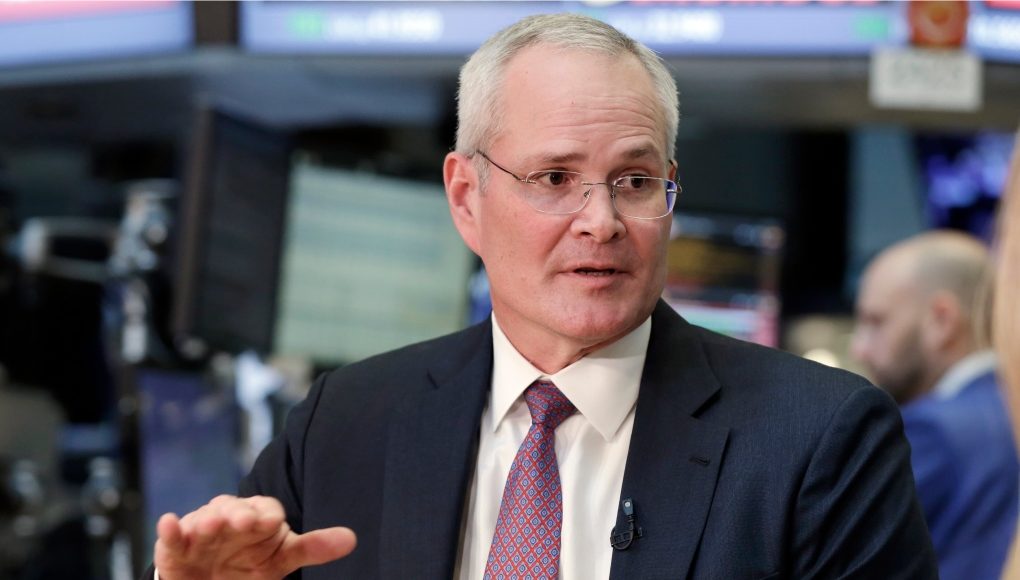With Guyana poised to be a major oil producer in Latin America in coming years, concerns have been mounting globally over the longevity of the oil and gas industry due to the push towards renewables. However, the expectations are that petroleum will remain a significant source of about half of the world’s energy mix over the next two decades.
Chairman and Chief Executive Officer of ExxonMobil, Darren Woods, recently pointed out that oil and gas accounts for about 60 percent of the global energy mix at present and is expected to remain a significant source of energy into the future.
“In 2040, despite increasing investments in renewables and concerns with emissions, oil and gas are still projected to make up about 50 percent of the global energy mix. This is a view held by major third-party sources,” he said in a statement to employees on October 21.
Woods noted that while there is a push towards alternative energy sources, today’s alternatives don’t consistently offer the energy density, scale, transportability, availability – and most importantly – the affordability required to be widely accepted.
This comes on the heels of projections by the Organization of the Petroleum Exporting Countries (OPEC) which suggest that global oil demand will peak in about 20 years, with global demand hitting 109.3 million b/d in 2040 before declining to 109.1 million b/d in 2045 and plateauing “over a relatively long period.”
Woods said that while society will move towards alternatives that are low carbon, oil and gas will continue to play an important role in the long-term energy mix. ”In fact, the IEA [International Energy Agency] published new projections last week that oil and gas are expected to remain at 53 percent of the global energy mix in 2040, under their Stated Policies Scenario,” Woods said.
He emphasised that switching to alternative energy will take a long time because of its size, complexity and amount of infrastructure required to keep it running efficiently. “It took roughly 100 years for oil to replace coal as the world’s dominant form of energy,” the CEO reminded.
The company projects that oil demand will grow at a rate of 0.6 percent a year while gas demand will grow by 1.3 percent. “With depletion rates, new oil production needs to increase by nearly 8 percent per year and natural gas by 6 percent. Under any demand scenario, depletion supports the need for significant investments. The IEA estimates that between $12 trillion and $17 trillion of additional industry investments are needed by 2040,” Woods said.
He further posited that there is a direct link between energy consumption and a growing and more prosperous population. As people become more prosperous, society will need more energy.
“The available alternatives for our existing energy system are incomplete, and – given the size, complexity and existing infrastructure – the energy transition will require significant time,” he stated. “This is a compelling investment case for the industry and our company – and is foundational to our long-term strategies and plans.”
ExxonMobil has been plugging billions of dollars into its Guyana operations where it has so far made 18 discoveries amounting to more than 8 billion barrels of oil equivalent resources. The company began producing oil last December at the US$3.5 billion Liza Phase 1 development while Liza Phase 2 is projected to be more than US$6 billion. Meanwhile, the recently approved Payara development is pegged at US$9 billion.
Woods said the company is also continuously working towards decreasing the environmental impacts of its operations which has seen it invest in technology to reduce flaring.
“In the near term, we work to mitigate emissions from our own operations, which we do by investing in cogeneration, energy efficiency, and efforts to reduce flaring and methane emissions,” he said. “We help consumers reduce their emissions with products that improve their efficiency, such as light-weight plastics and fuel-efficiency efforts, and by expanding the supply of cleaner burning natural gas, which is especially important in power generation.”
ExxonMobil has said it expects to be producing more than 750,000 barrels of oil per day by 2026 in Guyana while analysts say output will surpass the 1 million barrels per day mark by 2030.




